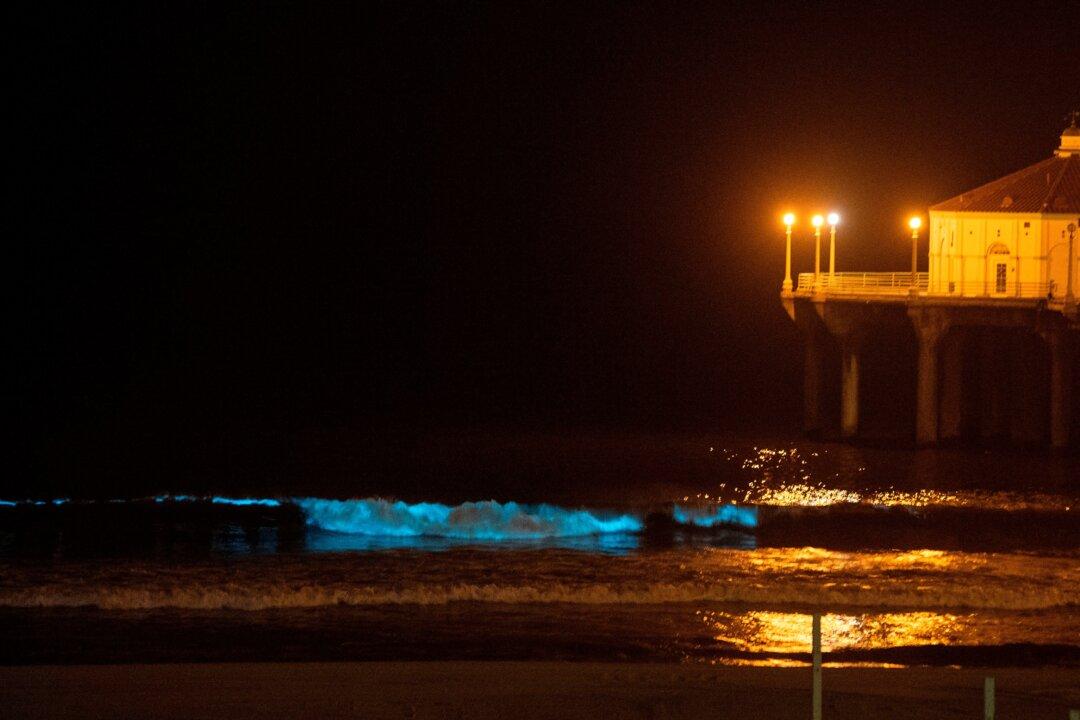Beachgoers on Florida’s west coast are being treated to glowing waves rippling on the sands at night.
The striking hues of iridescent green and blue are a phenomenon called bioluminescence.

Beachgoers on Florida’s west coast are being treated to glowing waves rippling on the sands at night.
The striking hues of iridescent green and blue are a phenomenon called bioluminescence.